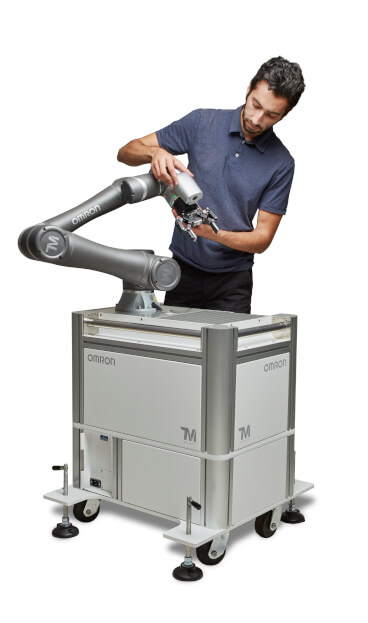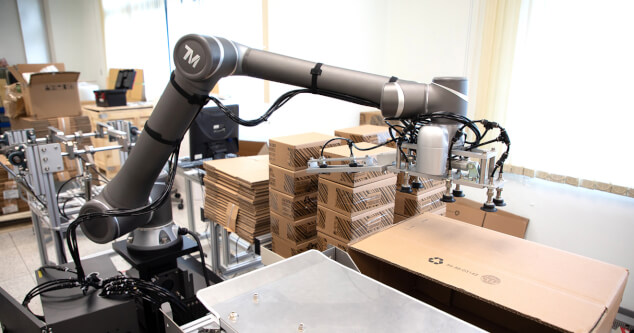Three pillars of successful cobot deployment: safety, quality and flexibility from a single source
Gepubliceerd op 4 november 2019 in Flexible Manufacturing
1. Safety is key: go for cobots with support and service
Cobots must be able to work safely and efficiently alongside human workers. They should be ISO10218 certified, whilst providing investment security. It is important that they can be put into service within a day or two. Software tools can facilitate the settings for implementing the ISO / TS15066 safety requirements during commissioning. Omron also recommends comprehensive feasibility studies, with safety and support services as part of the overall package from a single source.
2. Make sure the cobot solution is scalable and has optimized data insight via integrated vision technology
In applications where flexibility is more important than speed, cobots are an ideal solution with user-friendly software tools and built-in sensor capabilities. These include, for example, machine vision systems with localization options. Businesses need intelligent, easy-to-use camera and image processing systems to detect patterns, perform quality control, place objects, and read bar codes. Additional AI functions at the machine level ("AI at the edge") further expand the possibilities. Omron offers unique integrated cobot solutions to interactively support employees and optimize production processes. An integrated vision system helps companies cost-effectively improve reliability, consistency and precision. Flexible scalability is also essential: for example, it should be possible to start with a simple integrated system and expand as needed.

